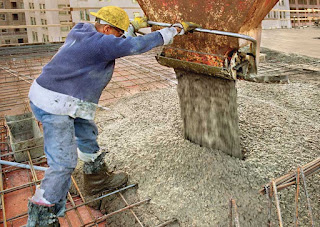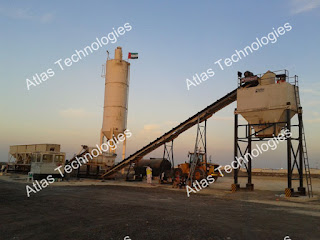What are some of the locally available materials that can be used to produce concrete?
Concrete is a versatile construction material that serves several functions in the construction industry. Here are some of the key functions of concrete:
Structural Support: One of the primary functions of concrete is to provide structural support in buildings, bridges, dams, and other infrastructure projects. It is used to create foundations, columns, beams, walls, and slabs that bear the weight and loads of the structure.
Durability and Strength: Concrete is known for its durability and strength, making it suitable for withstanding various environmental and mechanical stresses. It can resist compressive forces and provide long-lasting performance in different weather conditions.
Versatility: Concrete is a malleable material that can be molded into various shapes and sizes. It allows for flexibility in design and construction, enabling architects and engineers to create unique and aesthetically pleasing structures.
Fire Resistance: Concrete has inherent fire-resistant properties, which make it a preferred choice in building construction. It can withstand high temperatures and slow down the spread of fire, providing valuable time for evacuation and firefighting efforts.
Thermal Mass: Concrete has the ability to absorb and store heat, known as thermal mass. This property helps regulate indoor temperatures by slowly releasing or absorbing heat, thereby reducing the need for excessive heating or cooling in buildings.
Sound Insulation: Concrete has good sound insulation properties, which make it effective in reducing noise transmission between different areas or floors of a building. It helps create a quieter and more comfortable living or working environment.
Sustainability: Concrete can be produced using locally available materials, reducing transportation-related emissions. Additionally, it can incorporate recycled materials, such as fly ash or slag, as partial replacements for cement, making it a more sustainable construction option.
These functions highlight the importance of concrete as a fundamental building material that contributes to the stability, durability, and overall performance of structures.
There are several locally available materials that can be used as components in concrete production. The specific availability of these materials may vary depending on the region and its geological characteristics. Here are some common examples:
Aggregates: Aggregates are the main component of concrete and typically make up about 60-70% of its volume. They provide strength and stability to the concrete mixture. Locally available aggregates can include crushed stone, gravel, sand, or even recycled concrete.
Cementitious Materials: Cement is a binder that holds the concrete together. While cement production typically requires specific raw materials, supplementary cementitious materials (SCMs) can be used in combination with cement to enhance the properties of the concrete.
Locally available SCMs can include fly ash (a byproduct of coal combustion), ground granulated blast furnace slag (a byproduct of iron production), or silica fume (a byproduct of silicon or ferrosilicon production).
Water: Water is a crucial component in the concrete mixture, facilitating the chemical reaction that leads to the hardening and strength development of the material. It is typically locally available in most regions.
Admixtures: Admixtures are chemical additives that are used in concrete to modify its properties. Some admixtures, such as water reducers, accelerators, or retarders, can improve workability, set time, or durability of the concrete. The availability of admixtures may vary depending on the region and local suppliers.
Reinforcement: In reinforced concrete, steel reinforcement bars, also known as rebars, are embedded within the concrete to provide additional strength and resistance to tensile forces. Steel reinforcement is commonly available in construction markets.
It's important to note that the specific materials used in concrete production may vary depending on local regulations, construction practices, and the availability of resources in a particular region. Local suppliers, construction organizations, or engineering professionals can provide more detailed information on the locally available materials for concrete production in specific areas.





Comments
Post a Comment